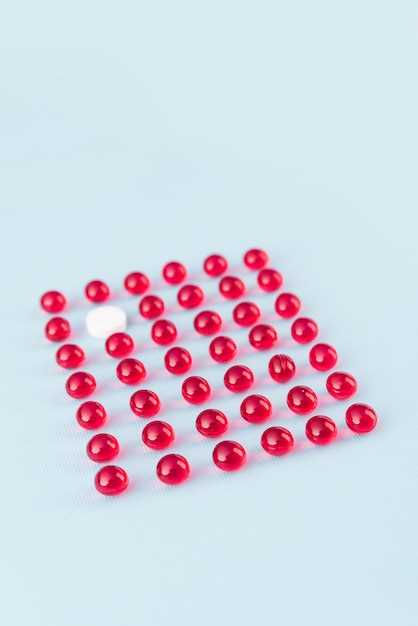
Mirtazapine is a medication used to treat depression and anxiety disorders. The main active ingredient in mirtazapine is known as mirtazapine hydrochloride. This powerful compound works by affecting the levels of neurotransmitters in the brain, helping to regulate mood and emotions.
Additionally, mirtazapine contains other ingredients such as lactose, hydroxypropyl cellulose, and magnesium stearate, which are essential for the formulation of the medication.
When you choose mirtazapine, you are opting for a well-balanced combination of ingredients that can help you manage your mental health effectively. Consult with your healthcare provider to see if mirtazapine is the right choice for you.
Mirtazapine Ingredients
Mirtazapine is a medication that contains a specific set of ingredients carefully selected to provide effective treatment for depression and other mental health conditions. The key components of mirtazapine include:
- Mirtazapine Hydrochloride – the active ingredient responsible for the therapeutic effects of the medication.
- Microcrystalline Cellulose – a filler substance used to make up the bulk of the tablet.
- Colloidal Silicon Dioxide – a flow agent that helps in the manufacturing process.
- Crosscarmellose Sodium – a disintegrant that helps the tablet break down in the body.
- Magnesium Stearate – a lubricant that aids in the tablet’s dissolution and absorption.
These ingredients work together to ensure the stability, efficacy, and safety of mirtazapine, providing patients with a reliable treatment option for their mental health concerns.
Overview of Components
Mirtazapine is a drug that belongs to the class of antidepressants known as tetracyclic antidepressants. The chemical composition of mirtazapine consists of a combination of different components that work together to achieve the desired therapeutic effects.
- 1. Mirtazapine’s main active ingredient is mirtazapine itself, which acts as a noradrenergic and specific serotonergic antidepressant.
- 2. Other key components of mirtazapine include fillers, binders, and coatings that help in the formulation of the medication.
- 3. The chemical composition of mirtazapine is carefully balanced to ensure effectiveness and safety in treating depression and other mood disorders.
- 4. Mirtazapine’s molecular structure plays a vital role in its mechanism of action and therapeutic benefits.
- 5. Understanding the components of mirtazapine is crucial for healthcare providers and patients to make informed decisions about its use and potential side effects.
Chemical Composition of Mirtazapine
Mirtazapine, a tetracyclic antidepressant, has a unique chemical composition that sets it apart from other antidepressants.
| Element | Chemical Formula |
|---|---|
| Carbon | C17H19N3 |
| Hydrogen | H19N3 |
| Nitrogen | N3 |
The molecular structure of mirtazapine consists of 17 carbon atoms, 19 hydrogen atoms, and 3 nitrogen atoms, giving it a unique composition that affects its pharmacological properties.
Molecular Structure Breakdown

Mirtazapine contains the active ingredient mirtazapine, which is a tetracyclic antidepressant. The molecular structure of mirtazapine consists of a diazepine ring fused to a bicyclic core structure. This unique structure plays a key role in how mirtazapine interacts with neurotransmitter receptors in the brain.
The active ingredients in mirtazapine work by enhancing the levels of certain neurotransmitters such as serotonin and norepinephrine in the brain. This mechanism of action is thought to contribute to the antidepressant effects of mirtazapine.
Active Ingredients in Mirtazapine
Mirtazapine contains the active ingredient mirtazapine, which belongs to a class of drugs known as noradrenergic and specific serotonergic antidepressants (NaSSAs).
Mirtazapine
Mirtazapine works by increasing the levels of serotonin and norepinephrine in the brain, which are neurotransmitters that play a key role in regulating mood and emotions.
- Mechanism of Action: Mirtazapine blocks certain serotonin and alpha-2 receptors, resulting in an increase in the release of neurotransmitters in the brain.
- Therapeutic Effects: By altering neurotransmitter levels, mirtazapine helps improve symptoms of depression, anxiety, and other mood disorders.
- Side Effects: Common side effects of mirtazapine may include drowsiness, increased appetite, weight gain, and dry mouth.
Key Components and Their Functions
The key components of mirtazapine play a crucial role in its functioning as an antidepressant. Here is a breakdown of the main ingredients and their functions:
1. Mirtazapine

Mirtazapine is the primary active ingredient in this medication. It works by increasing the levels of certain neurotransmitters in the brain, such as serotonin and norepinephrine, which are known to regulate mood and emotions.
2. Inactive Ingredients
Aside from mirtazapine, the medication also contains inactive ingredients such as lactose, cellulose, and other fillers. These ingredients help in the proper formulation and delivery of the medication.
- Lactose: Acts as a filler and aids in the tablet formulation process.
- Cellulose: Another filler that helps in binding the ingredients together.
Understanding the key components and their functions can provide valuable insight into how mirtazapine works to alleviate symptoms of depression and improve overall mental well-being.
